 |
| Jade? No! That's green aventurine |
You'd be surprised what passes for "jade" on Etsy. Many green gemstones, including some that are dyed, which are NOT jade, can legally be called jade due to technicalities.
Most of the problem lies in the fact that "jade" is both a stone AND a color. Thus, sellers can say "jade gemstone" to indicate a "gemstone that is jade green" and legally get away with terminology that is intentionally misleading.
The truth is, real jade is generally quite expensive. It's considered nearly sacred in the East, and increasing demand puts constant pressure on an ever dwindling supply.
But what IS jade?
Strangely enough, jade is actually two completely different stones! In ancient times, they didn't have the technology to analyze the mineral composition of gems, so they relied on qualities that can be viewed with the eye. Two stones, with similar crystalline structures, and rich translucent color - with an internal iridescence, where given the name "jade".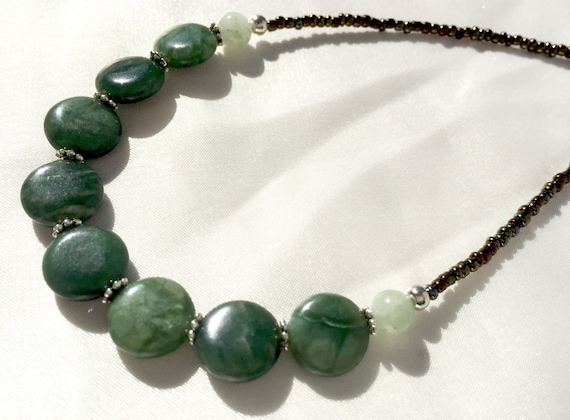 |
| Nephrite jade and green aventurine necklace from my shop. |
Nephrite jade can be white, light green, medium green or dark green--but it can't come in any other colors. Moreover, nephrite will always be a "true" green--without a lot of yellow mixed in. A lot of modern nephrite mining takes place in Canada, where some of the most recent deposits have been discovered.
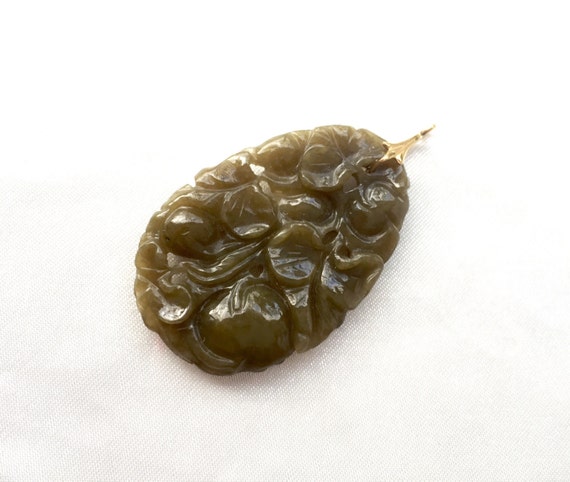 |
| Vintage jadeite pendant from my shop |
Jadeite is a sodium-heavy gem, somewhat more common than nephrite, and coming in a much greater range of colors.
Jadeite comes in "true" greens, but also yellowish olive greens, blueish greens, white, pink or peach, lavender/purple, and even--rarely--true blue.
Anyway, you're here to learn what gemstones make a great natural substitute for genuine jade. And without further ado, here are my favorite options!
Ching Hai "Jade"
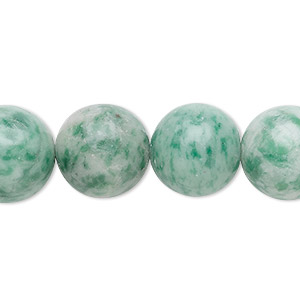 |
| Image from Fire Mountain Gems |
But perhaps the worst reason to market this as jade is actually the softness of this stone. True jades are quite dense and hard, very durable. This stone is very soft, prone to scuffing and chipping, and doesn't even take a strong polish well. I would recommend avoiding bracelets and long necklaces made from this stone.
I do not carry Ching Hai "jade" in my shop. But I do carry the somewhat more durable green marble
Peace "Jade"
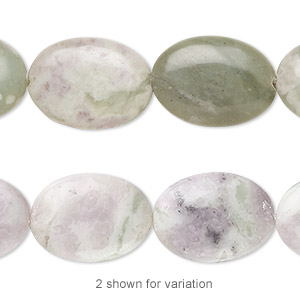 |
| Image from Fire Mountain Gems |
Peace "jade" is a stunning stone, though it's an aesthetically poor substitute for actual jade. Real jade, even jadeite jade rarely exhibits more than one color, and never in this cloud-like pattern.
Peace "jade" is a mix of serpentine (green), quartz (white), and stichtite (lavender/pink/purple). Stichtite is a carbonate of chromium and magnesium. Stichtite forms naturally in chromite-containing serpentine, which is how you get this blended stone. Occasionally the stones will be a greater mix of lavender and white, with small bands of green serpentine.
Peace "jade" is a quality stone - the serpentine and quartz give it a lot of strength and durability, and (unlike Ching Hai "Jade"), it's suitable for long necklaces and bracelets.
I don't currently carry Peace "Jade" in my shop, but I've been thinking about adding it to the lineup. I'd love any feedback from fans, if it's something you'd like to see.
Amazonite, or Amazon Blue "Jade"
As mentioned above, jadeite can come in a wide range of hues, including true blue. It's one of the rarest and most valuable colors of jades, and if you see it for a low price, be very, very suspicious.
Amazonite, sometimes called "Amazon jade" or "Amazon blue jade" is an excellent substitute for genuine blue jadeite. Like jade, ammonite (named for the Amazon river), has an excellent internal translucency. Ammonite is, however, a feldspar gemstone--and is much softer than either jadeite or nephrite.
Amazonite is a valuable stone in it's own right, though not nearly as costly as jade. The more intensely bright blue, the more valuable the stone.
Shop Amzonite in my Etsy shop.
Sea "Jade"
It's a nice stone in it's own right. Serpentine has been used for centuries, perhaps millennia, as a decorative carving stone. It's very dense and hard, and holds up well to carving. Because it has a lot of translucency, similar to that of natural jade, the very best samples are used as substitutes for jadeite jade.
Olive "New Jade"
Olive serpentine "new jade" still a lovely gem, and closely resembles the warmer tones of true olive jade: a type of jadeite. It has all the durability and translucency of sea "jade" serpentine. As a bonus, this type of serpentine also sometimes has subtle banding and swirling, which can resemble nephrite jade as well.
Olive "new jade" is also excellent for use in men's jewelry, as the hue has a tribal, even military element to it.
Shop these pieces in my Etsy shop:
Italian onyx and olive "new jade" necklace
"New jade" chip bracelet (sold out - back in stock soon!)
Tribal men's "new jade" and obsidian necklace
Men's "new jade", hematite and dragon agate necklace
African "Jade" - Verdite
Despite that, verdite is a beautiful stone, and really should be appreciated in it's own right--not just as a substitute for jade. Unlike serpentine, it comes in true "jade greens" - that is to say, rich greens with slight undertones of blue in them.
Verdite has SOME of the translucency of jade, but is more often "creamy" or "cloudy". It's one of the few stones to have this quality to it. Since verdite has mica within the stone, it often exhibits some of the internal shimmering which top-quality jadeite will possess. Verdite also frequently has internal marbling of white, black, and grey. These bands somewhat resemble Nephrite jade, and add to the overall beauty of this unusual gemstone.
Verdite coming soon to my Etsy shop!
Green Aventurine

My personal choice for a jade substitute is green aventurine. It's a stunning gem in it's own right, with a popular following.
Like jade, it comes in a wide range of green shades: from mint, to kelly, to emerald, fern, and well. . . jade green too! Like gem grades of serpentine, aventurine has a lovely translucency, but only aventurine has refractory mineral inclusions which give the stone an internal shimmer. This internal shimmer is very similar to the "glow from within" that comes from the interlocking crystal matrix within jades.
Like jadeite jade, aventurine comes in other colors: pink, peach, orange (called red aventurine), yellow, brown, cream and, very rarely, true blue.
Shop green aventurine in my Etsy shop
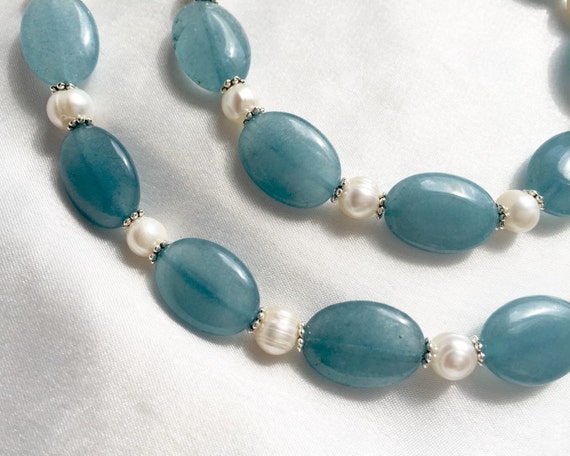 |
| Malaysian "jade" is a dyed quartz. Though lovely in it's own right, it's not a real jade, and an honest seller will make you aware of that. See this necklace in my shop. |
So I hope all this has helped you realize how many things "pass" as jade online--even on Etsy, an site which really is generally run with great integrity.
In addition to many natural gemstones which may serve as an elegant substitute to jade, there are numerous dyed stones: primarily quartz and quartzite gems, which are marketed (either honestly or dishonestly) as jade or jade substitutes.
In my shop, I always identify a faux jade by using "jade" in quotes - and I explain myself in the item description.
However, there are some legal loopholes where sellers can forgo an explanation. Certain terms, like "Ching Hai Jade" , "African Jade" and "Malaysian Jade" have become accepted as legal, without an explanation, due to their prevalence in the industry. If you see these terms, know that you are dealing with a natural marble-like composite stone, and a dyed quartzite, respectively.





No comments:
Post a Comment